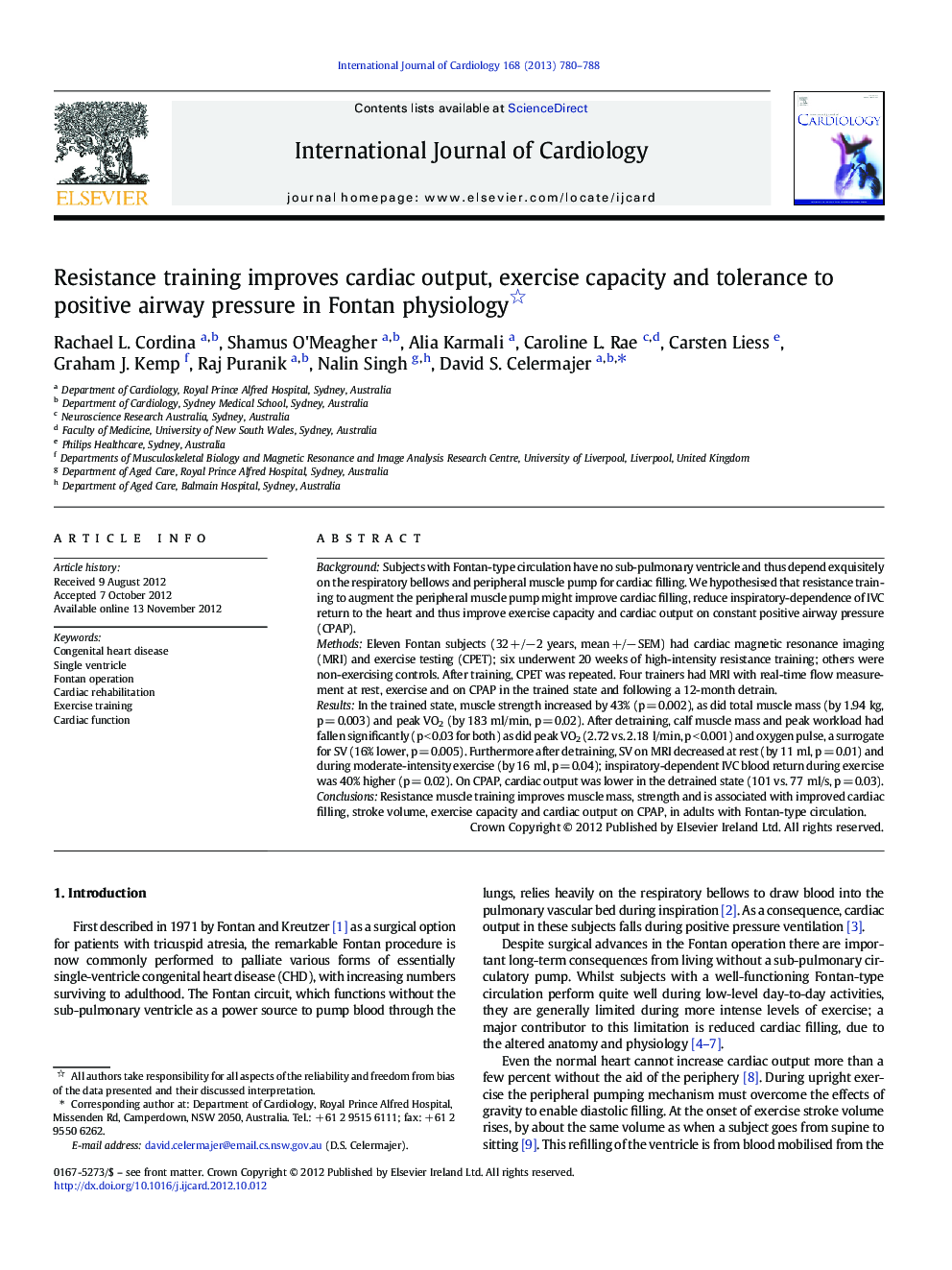| Article ID | Journal | Published Year | Pages | File Type |
|---|---|---|---|---|
| 5974051 | International Journal of Cardiology | 2013 | 9 Pages |
BackgroundSubjects with Fontan-type circulation have no sub-pulmonary ventricle and thus depend exquisitely on the respiratory bellows and peripheral muscle pump for cardiac filling. We hypothesised that resistance training to augment the peripheral muscle pump might improve cardiac filling, reduce inspiratory-dependence of IVC return to the heart and thus improve exercise capacity and cardiac output on constant positive airway pressure (CPAP).MethodsEleven Fontan subjects (32 +/â 2 years, mean +/â SEM) had cardiac magnetic resonance imaging (MRI) and exercise testing (CPET); six underwent 20 weeks of high-intensity resistance training; others were non-exercising controls. After training, CPET was repeated. Four trainers had MRI with real-time flow measurement at rest, exercise and on CPAP in the trained state and following a 12-month detrain.ResultsIn the trained state, muscle strength increased by 43% (p = 0.002), as did total muscle mass (by 1.94 kg, p = 0.003) and peak VO2 (by 183 ml/min, p = 0.02). After detraining, calf muscle mass and peak workload had fallen significantly (p < 0.03 for both) as did peak VO2 (2.72 vs. 2.18 l/min, p < 0.001) and oxygen pulse, a surrogate for SV (16% lower, p = 0.005). Furthermore after detraining, SV on MRI decreased at rest (by 11 ml, p = 0.01) and during moderate-intensity exercise (by 16 ml, p = 0.04); inspiratory-dependent IVC blood return during exercise was 40% higher (p = 0.02). On CPAP, cardiac output was lower in the detrained state (101 vs. 77 ml/s, p = 0.03).ConclusionsResistance muscle training improves muscle mass, strength and is associated with improved cardiac filling, stroke volume, exercise capacity and cardiac output on CPAP, in adults with Fontan-type circulation.
